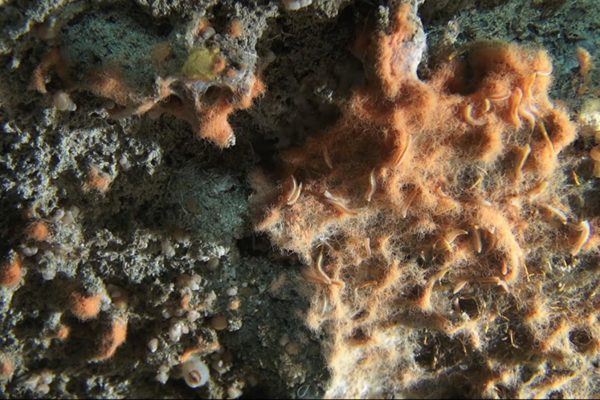AUSTIN, Texas — An international team of scientists, including researchers from Uppsala University in Sweden, The University of Texas at Austin and elsewhere, discovered several new microbes carrying genes that until now were thought to be unique to a group of more complex life forms including humans. This finding supports a decades-old hypothesis that complex life first arose from the merger of two simpler life forms.
Here is the picture that is emerging: Around 2 billion years ago, a microbe called an archaeon gobbled up a bacterium, and the bacterium survived. Because the new living arrangement was beneficial to both the landlord and the tenant, the two previously free-living microbes spawned a single, hybrid offspring — a new form of life whose descendants evolved into plants, fungi, fish and even humans. These life forms, characterized by cells with complex internal structures, are called eukaryotes.
The other major form of life — the prokaryotes, which includes small microscopic bacteria and archaea — have long been defined as having cells with much simpler internal structure. But now that distinction may be blurring.
“The things we thought made a eukaryote a eukaryote, we’re now finding in these new archaea,” says Brett Baker, assistant professor at the University of Texas Marine Science Institute and a co-author of the paper outlining the new discovery published online today in the journal Nature. “We’re essentially rewriting the textbook on basic biology.”
The research was led by Thijs Ettema at Uppsala University in Sweden and also includes researchers from the University of California, Berkeley, Aarhus University in Denmark, GNS Science in New Zealand, the Japan Agency for Marine-Earth Science and Technology and Ghent University in Belgium.
The latest findings extend work published in 2015 by the same team led by Ettema, which identified the first species of archaea with genes previously thought to be unique to eukaryotes. All these archaea appear to be descendants of the original archaeal host cell, which also spawned the eukaryotes. Each of these microbes is so different from the others — as different as a tree is to a mushroom — that they represent four unique groups, called phyla. And together, these four new phyla — named for Norse gods Thor, Odin, Heimdall and Loki — form a new group called Asgard.
Because these new archaea contain even more “eukaryotic” genes than were discovered in the archaeon announced in 2015, this latest work suggests that the original archaeal host cell had even more of the key elements of eukaryotes.
The Asgard archaea were discovered in aquatic sediments collected at seven sites around the world, including hydrothermal vents in the Arctic Ocean, an aquifer in Colorado, a bay in Denmark and hot springs in New Zealand and Yellowstone National Park. So far, these archaea have not been successfully grown in a laboratory or imaged under a microscope. Instead, they were identified by painstakingly reconstructing their genomes from bits of genetic material collected from the sediments.
Baker and UT Austin graduate student Kiley Seitz were one of several groups that used high-throughput DNA sequencing and innovative computational approaches to piece together the genomes of the newly described organisms, and also identified “eukaryotic” genes within those genomes.
Studying Asgard archaea in more detail is a top goal for Ettema, Baker and the rest of the team. The present study shows that these archaea can be found in many more environments and not just in the ocean floor as thought before. This makes this goal much more tractable.
“It would be great if we could isolate or grow Asgard cells, and study them under the microscope,” says Ettema. “I am convinced that this will reveal more important clues about how complex cells evolved. Ultimately our microbial ancestry will be uncovered.”
Funding for this research was provided by the European Research Council, the Swedish Foundation for Strategic Research, the Swedish Research Council, the European Union, the Danish National Research Foundation and the U.S. Department of Energy.




